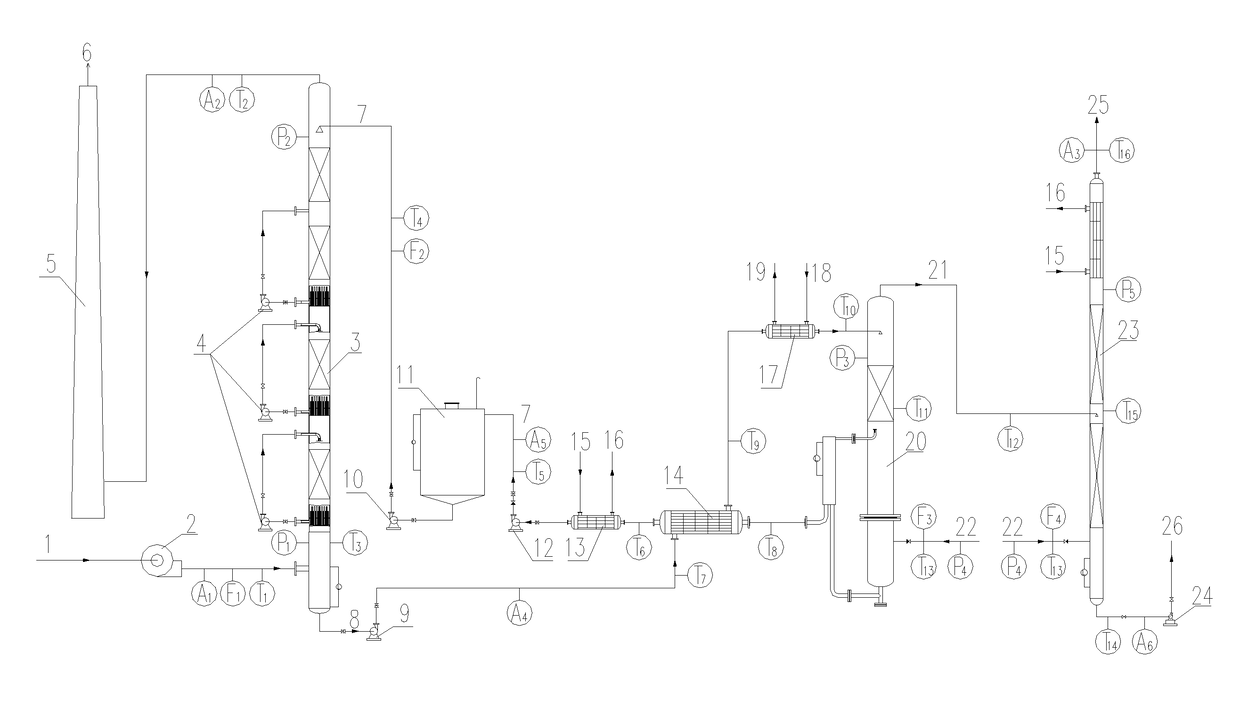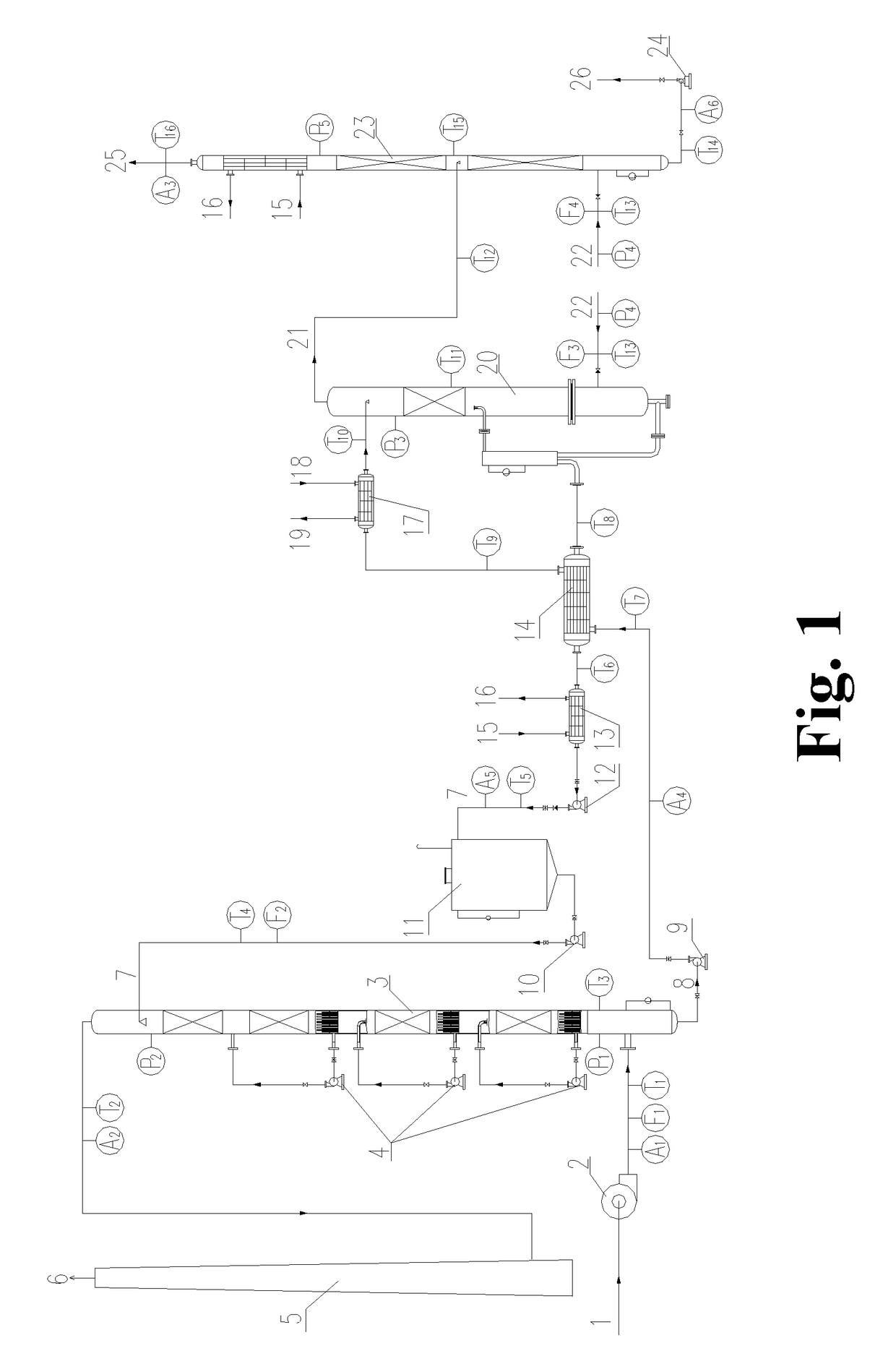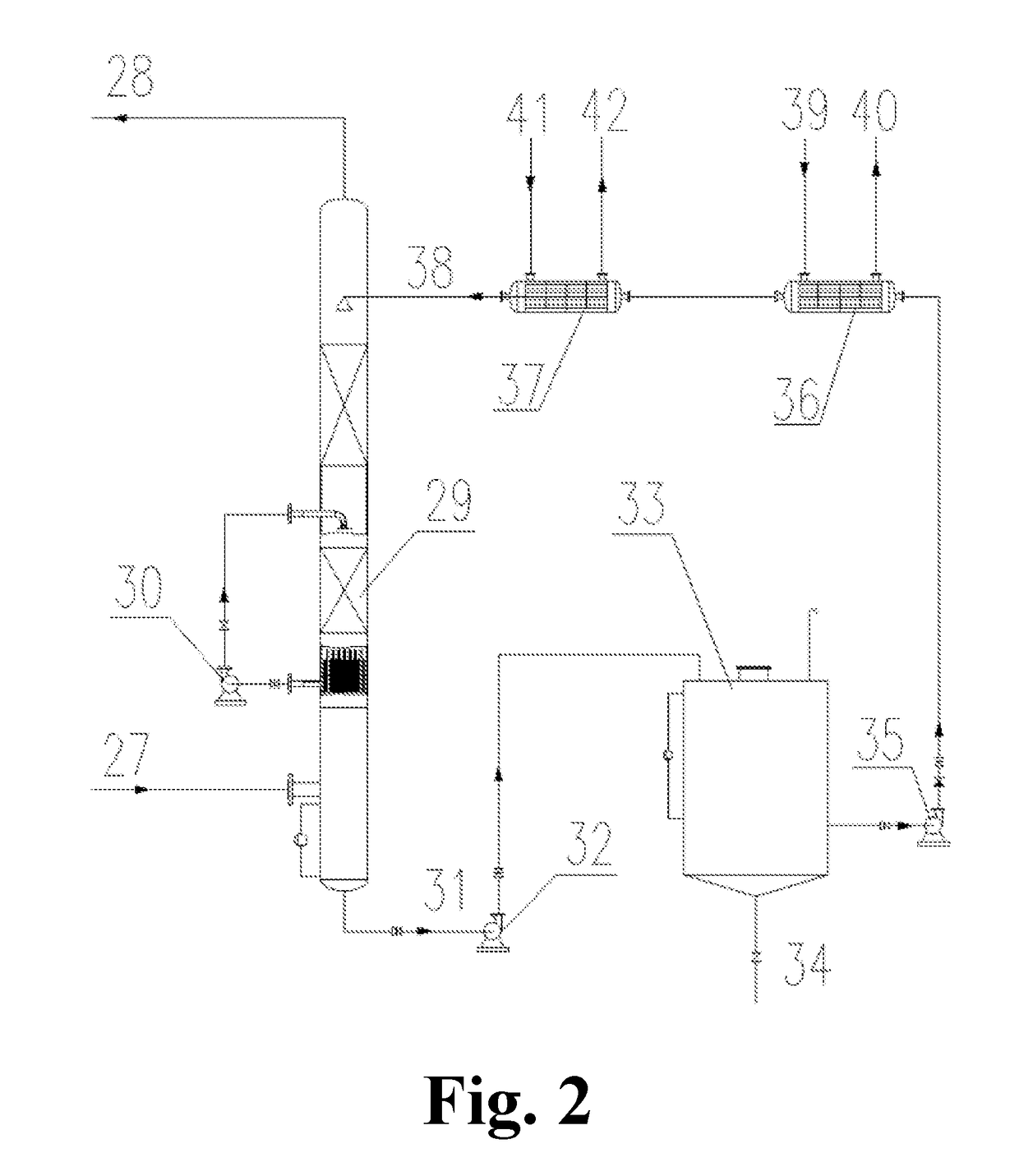Process and device for desulphurization and denitration of flue gas
a technology of desulfurization and denitration, which is applied in the direction of dispersed particle separation, separation processes, energy input, etc., can solve the problems of less than 80%, low desulfurization efficiency, and serious environmental pollution, so as to increase the circulation volume and increase the circulation volume of heat storage fluid.
- Summary
- Abstract
- Description
- Claims
- Application Information
AI Technical Summary
Benefits of technology
Problems solved by technology
Method used
Image
Examples
Embodiment Construction
[0054]The flue gas desulfurization-denitration process and device of the present invention will be described below in conjunction with specific embodiments. The embodiments are intended to better illustrate the present invention, and should not be construed as limiting the claims of the present invention.
[0055]The operation methods are as follows:
[0056]The operation methods of the processes and devices for the flue gas desulfurization-denitration, the regeneration of the desulfurization-denitration solution and the concentration of sulfur dioxide and / or nitrogen oxides are shown in FIG. 1: A flue gas 1 with a temperature below 50° C. is pressurized by a booster fan 2 and then enters into an absorption tower 3 from the bottom. At the same time, a desulfurization-denitration lean solution 7 enters into the absorption tower 3 from the top. In the absorption tower 3, the flue gas 1 is brought into direct contact with the desulfurization-denitration lean solution 7. At this point, sulfur...
PUM
| Property | Measurement | Unit |
|---|---|---|
| temperature | aaaaa | aaaaa |
| temperature | aaaaa | aaaaa |
| temperature | aaaaa | aaaaa |
Abstract
Description
Claims
Application Information
 Login to View More
Login to View More - R&D
- Intellectual Property
- Life Sciences
- Materials
- Tech Scout
- Unparalleled Data Quality
- Higher Quality Content
- 60% Fewer Hallucinations
Browse by: Latest US Patents, China's latest patents, Technical Efficacy Thesaurus, Application Domain, Technology Topic, Popular Technical Reports.
© 2025 PatSnap. All rights reserved.Legal|Privacy policy|Modern Slavery Act Transparency Statement|Sitemap|About US| Contact US: help@patsnap.com



